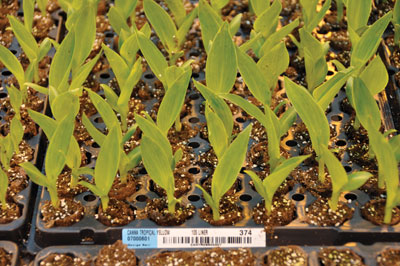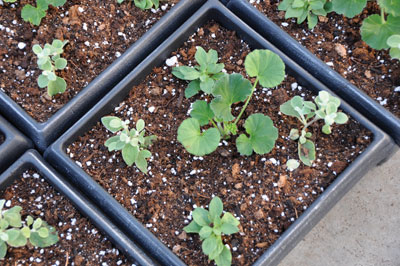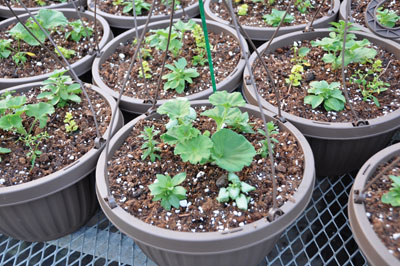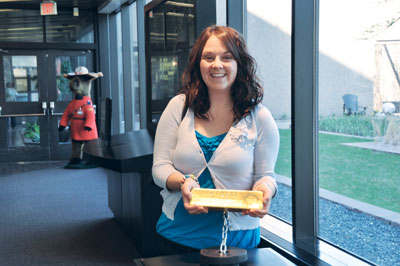
Features
Business
Trends
Growing in the Green: Industry wake-up call
January 2, 2012 By Melhem Sawaya
Changes in any industry happen all the time and horticulture is no exception.
Changes in any industry happen all the time and horticulture is no exception. Taking note of such changes and adjusting to them on a continuous basis is the key to success.
 |
|
| Not keeping up with structural improvements will lead to inefficient production. Advertisement
|
Ignoring the changes for one year makes it twice as hard to adjust, and it means you will always be trying to catch up. Ignoring the changes for more than three years means you are completely out of touch.
In the late 1970s, when flower demand was rising by a whopping eight to 10 per cent each year, not all growers took advantage of the growth.
They were satisfied with the volume of business they were generating and their profit margins. Others were building greenhouses and expanding as quickly as possible. And a third group, content with moderate expansion, were mainly strengthening themselves to better face the future.
Companies that didn’t change were unable to fulfil new requests from customers and were dropped as suppliers.
 |
|
| Favourite old crops produced differently, i.e., canna from seed.
|
Those that expanded aggressively did very well until the late 1980s; at that time, production costs began increasing at a much faster pace than in previous years. If an operation is not mechanized and built with efficiency in mind, it gets to a point where the rising cost of production is no longer offset by the selling price. Retrofitting a large greenhouse operation is impossible when profit margins are minimal.
The third group adjusted with trends and market demand, and tested new waters on a small scale. They would then expand on the successful products and drop the ones that did not work. At the same time, they built a solid foundation with improved management systems and greenhouse infrastructure. Mechanization and improved efficiency helped them deal with lower prices and higher costs when they arose.
INVESTING FOR SUCCESS
It is simple economics – if you want to succeed and remain in business for the long haul, you have to invest in the future NOW.
During the ’70s, ’80s and ’90s, when production costs and input materials were increasing, growers were able to handle the increases because:
- Production had increased per square foot. It is easy and rewarding to increase production per square foot when demand is strong.
- The use of chemicals had decreased, with more dependance on IPM.
- Production schedules were fine-tuned to exactly what is required, thereby reducing crop time, energy input and labour costs.
- New varieties requiring shorter crop times were introduced.
- New crops that are excellent garden performers were utilized. Impatiens single-handedly increased consumer interest in gardening, because they are excellent garden performers whether in sun or shade. They are drought-tolerant and recover quickly even when abused. This encouraged homeowners to enlarge their gardens and use more plants.
- Supermarkets and chains continued to market more products every year.
- Even when the product left the greenhouse in good shape, a good percentage ended up in the garbage due to poor plant maintenance at retail. It was widely accepted for stores to have 15 or 20 per cent product shrinkage – profit margin targets were more easily reached back then because retail costs weren’t as high as they are today.
- Demand was stronger than supply, since there was no shrinkage because of product backing up.
CURRENT PROBLEMS
Those are some of the factors that compensated for cost increases in the ’70s, ’80s and ’90s. So, what has happened since then, and why is the impact now more serious?
- Costs have increased at a much faster pace than in previous years.
- Breeders and brokers push items on buyers that are not proven in production and consumer acceptance. This results in slower sales because consumers are turned off by disastrous garden performance by the plants.
- Energy costs (including heating, lighting and transportation) have doubled or tripled since 1999.
- Growers often increase production in response to profit margin pressures. Increased production can lead to higher costs, especially when the product does not sell on time or is of inferior quality.
- Some stores are under pressure to come up with more turns, so new programs of different container sizes are added along with different varieties. However, this is done without increasing display areas. All it takes is one bad weather weekend to dampen sales. This translates into inferior products that consumers do not want, and that means and growers cannot ship fresh product.
- Growers ship products on planned dates without taking into consideration whether the store needs the product or not.
- Too many growers stick with products that have reduced market demand.
- Products grown on speculation often can’t find customers.
- Many products are grown and sold at a very low price because otherwise there is no home for them. In summary, there is too much supply compared to the demand.
- Total sales for most of the garden centres and stores increased last year by two to five per cent, but production increased by over 10 per cent. This created an oversupply situation.
SAMPLING SOME SOLUTIONS
So where do we go from here? Here are suggestions that will not just ease the problem, but also boost your spring crop to new levels:
 |
|
| Five cuttings in a 12” pot offers a good balance in consumer quality and profitability.
|
Grow only what you know you can sell and definitely five per cent less than last year.
Review your product mix and see what sold well and what you had to push to get out. In other words, grow what the consumer wants … not what you like.
Review your production schedule and see how you can make it more cost-effective.
Check all prices with more than one supplier, but don’t change suppliers simply for slightly lower prices, especially if you are getting good service from your old supplier.
Changing your production timing for a few cheaper items that require opening the greenhouse a month or two earlier is a bad idea. Buy these materials as rooted cuttings, plugs or pre-finished material.
 |
|
| Seven cuttings in a 10” pot is a recipe for losing money … and a disaster for the consumer.
|
Carefully select combination container material. Some varieties planted in these combos disappear at shipping time.
Use some seed material in combinations or alone, even in large containers. Last summer, our container trials included seed materials in large containers and they looked great. We didn’t dose them with growth regulators and let them show their full potential.
If you don’t calculate your cost of producing each item, you will never be able to make effective decisions. Detailed costing is the basis for prudent decisions.
 |
|
| Have achievable goals, and treasure those “golden” moments, especially when visiting the Royal Canadian Mint and its gold bar display.
|
If every operation in Canada decreased production by five per cent, profits could increase by two per cent. If every operation in North America decreased production by five per cent, profits could increase by four per cent.
We have done a great job on production efficiencies but a very bad job on marketing and that is where the main problem lies. Either we reduce production or we increase demand. Encourage your industry association to develop effective marketing programs.
Be proactive in every aspect of the operation to have consumer success as the number one priority.
GROWING THE BUSINESS
It’s all a matter of attitude. If you are wondering about taking business from competitors, just remember that in the middle of every buSINess there is a SIN, and the “sin” is not knowing who the competition truly is. It’s not other growers. It’s every other consumer product. Do you want a bigger piece of the pie or do you want to make the pie bigger? A continual undercutting of prices does not help anyone in the long run.
Our product offers beauty, relaxation and healthy exercise. It adds value to any property. All we have to do is help consumers be successful and exceed their expectations.
Advertising is great, but the word of a satisfied customer is more effective than any other promotional message.
Print this page